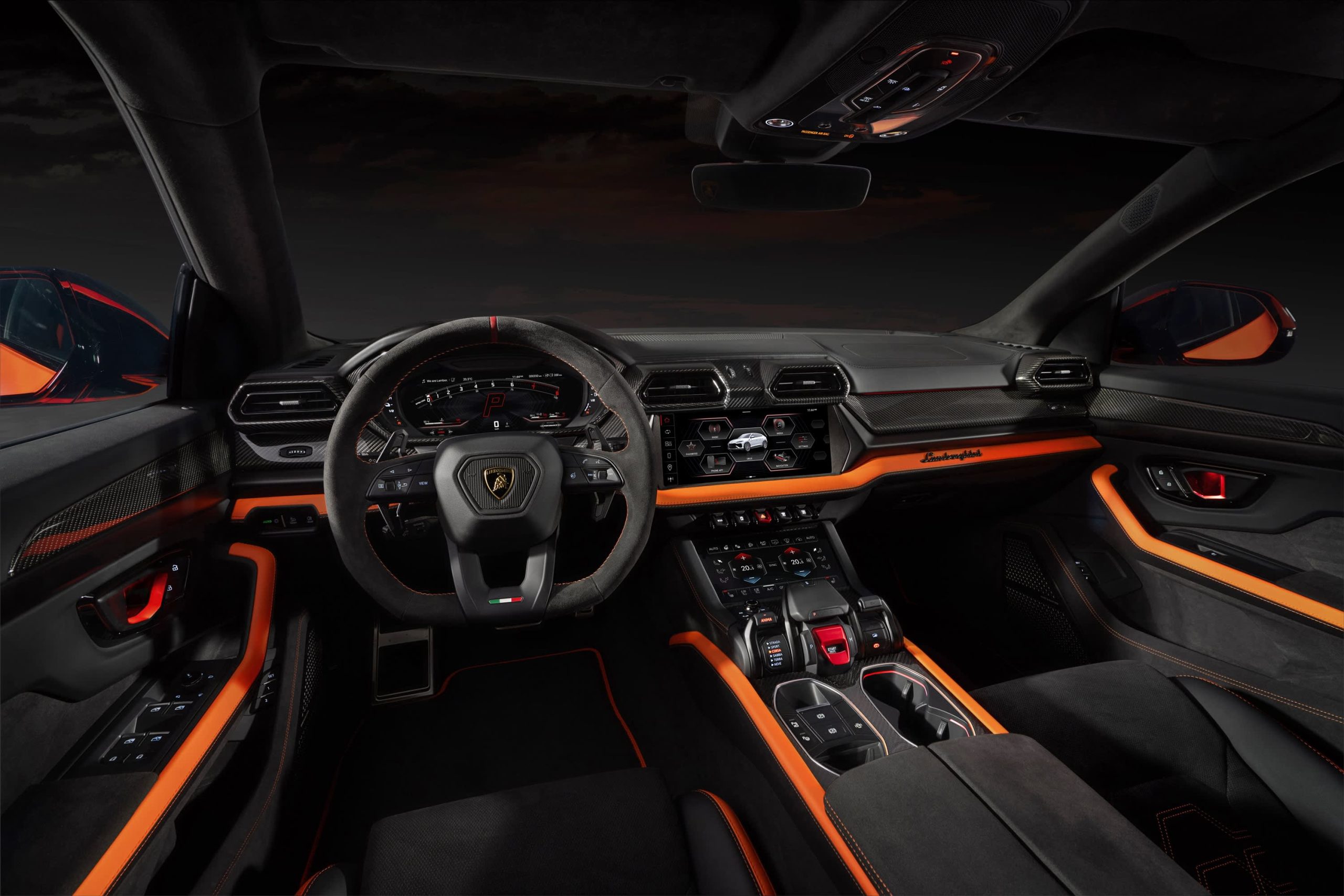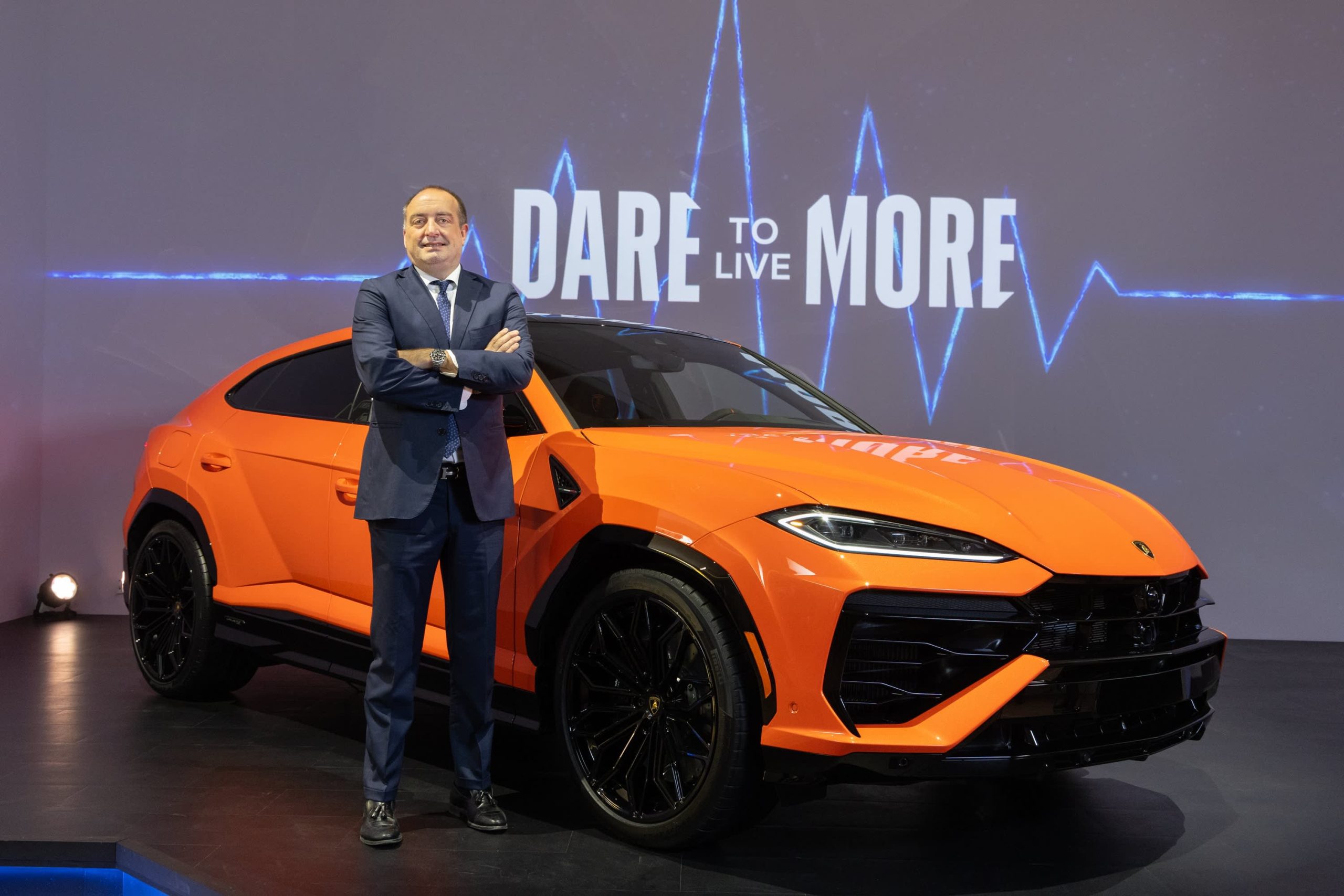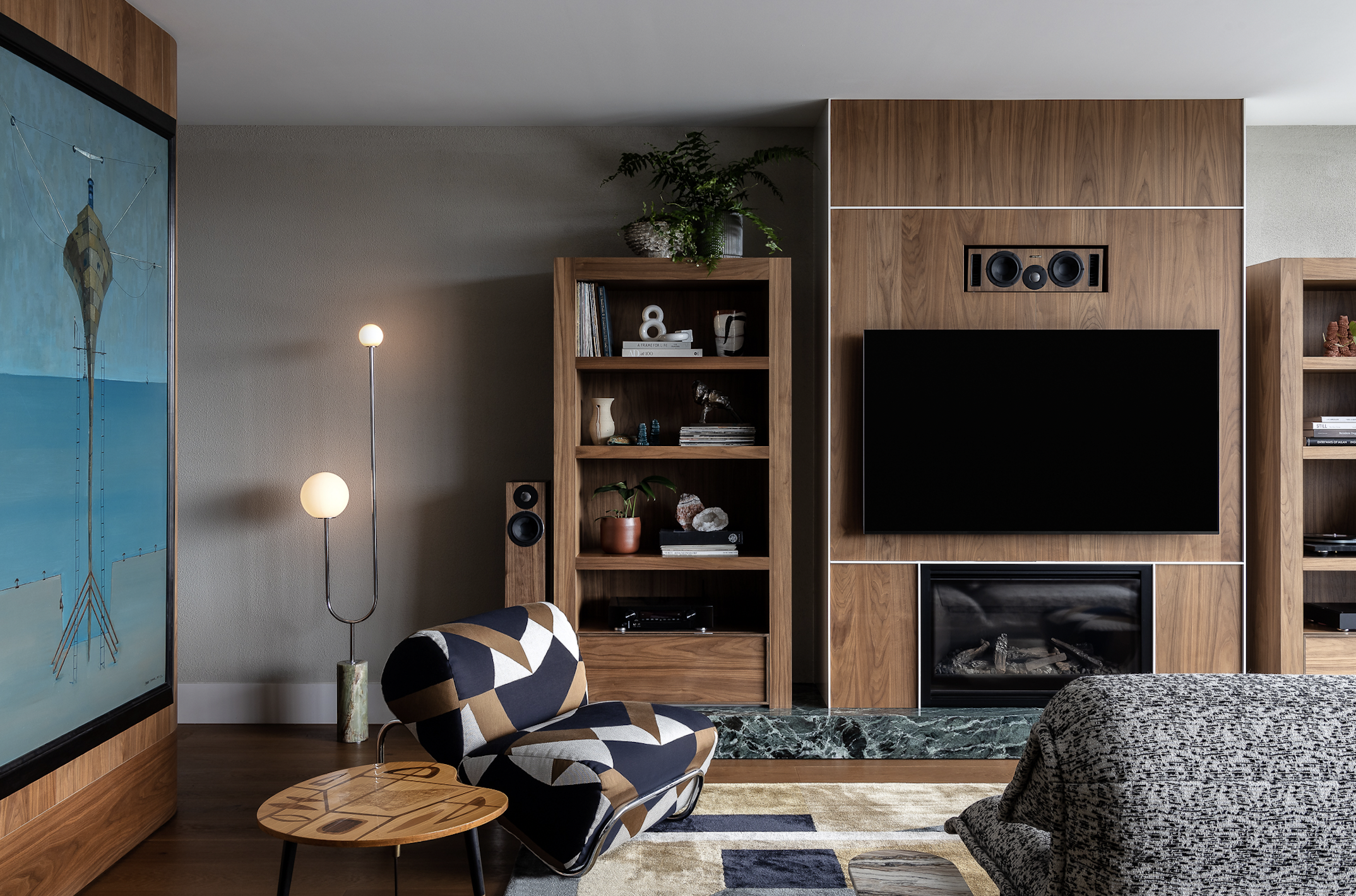The Mushroom Lamp: Why The ’70s Icon Is Back
For a new generation of interior designers, mushroom lamps are a playful way to shake up décor and connect it to nature.
LET ME introduce you to the least-cool name for a suburb ever: Pleasantview. That’s where I grew up, in 1970s Canada, in a split-level with an uncool fake fireplace in which my parents proudly displayed a book called “Gnomes.” The only, only cool thing we owned—sorry, “Gnomes”—was a white, plastic mushroom lamp, the slimmest of connections to foreign concepts like grooviness, Studio 54 and Cher. But even its stubby glamour was compromised: It sat on the TV, forced to coexist with “The Waltons,” surrounded by kitschy figurines: a china shepherdess, a prayerful child, a buffalo, none of which had ever snorted cocaine with Halston. Still, as a kid aspiring to aesthetic sophistication, I disproportionately pinned my hopes on that white, glowing lump of plastic we likely bought at Sears.
I hadn’t thought about it in years. But on a recent, soggy April day in New York City, where I now live, I ducked into the MoMA Design Store to escape the rain and could not ignore the many, many mushroom lamps with their distinctive semispherical shades that, priced from $30 to $1,430, had sprouted in nearly every corner. And so began a quest to find out how the sole ray of chicness in my oppressively pleasant childhood has resurfaced as a décor (and social-media) darling in 2022.
“Design from the 1960s and ’70s is back,” said Chay Costello, associate director of merchandising at MoMA, when I inquired about her store’s profusion of shrooms. “Then, like now, people were trying to connect with nature. But another reason we ended up with this preponderance of mushroom lamps is that there’s an affinity between the form of a mushroom and the function of lamps.” A fungus has a stalk and a cap, she pointed out—close, if somewhat moister, cousins to a lamp’s base and shade.
Ms. Costello is personally a fan. “I see them as delightful little mascots that suggest the natural world,” she said. “The life of the party but an old soul at the same time.” An old soul like Dolly Parton? “I was thinking of the word ‘primordial.’”
Next, I turned to Jonathan Adler, the New York design titan who, like me, grew up in the 1970s, a period that clearly influenced his pop aesthetic. “I didn’t have a pivotal encounter with one like you did,” he confessed. “I was never abused by a mushroom lamp.” Still, he acknowledges the motif had an outsize presence in design then and has again. “I don’t know why mushrooms have such reach and resonance. Maybe the Mushroom Council had an incredible publicist in the ’70s.”
As to why they’re back? “In the amped-up, Instagrammable age, people are always looking for an escape from the basic,” said Mr. Adler, who festooned the stem of his Globo version with Lucite balls. “And the mushroom lamp is just not basic.”
The earliest, looniest examples hammer this home. Charlotte and Peter Fiell, U.K.-based design historians and authors of “1000 Lights” (Taschen), opened my eyes to art nouveau designer Émile Gallé, whose c. 1900 glass ‘Champignons’ lamps—literal riffs on fungi—appear to be collaborations between Mr. Tumnus the Narnian faun and LSD enthusiast Timothy Leary. In 1950s Italy, glass mushroom lights again reared their domed heads, now abstracted but just as swoopy, an avant-garde reaction to uptight Bauhaus geometries. Then came plastic and the mainstreaming of the lamps. “There was a 10- to 15-year delay from the avant-garde to Kmart,” said Mr. Fiell.
Ironically, just as the lamps got cheaply plastic, their appeal as a link to nature mushroomed in the hippie ’60s and ecological ’70s, decades when psychedelic “magic mushrooms” were giving people agreeably irrational views of their fern-filled décor. A similar vogue for nature in pandemic America has given rise to the popular Instagram hashtags #mushroomlove, #mushroomporn and #mushroommonday and even a one-off 2021 magazine called Mushroom People, an offshoot of the cannabis-themed periodical, Broccoli.
“I’ve definitely seen a lot of people communicating the desire to be more present and have less screen time, and you cannot do that better than when you’re mushroom hunting,” said Anja Charbonneau, the Portland, Ore.-based editor-in-chief and creative director of both magazines. Beyond six pages filled with several kooky mushroom lamps she bought on eBay for a total of $600 (“I was drawn to the weirdos and also they were cheaper”), Mushroom People includes a feature on a discontinued cult scent called “After the Flood” by Apoteker Tepe, famed for making one smell, as Ms. Charbonneau enticingly put it, “like decay…dank, humid, like a mushroom on a rotting stump.” Who needs Chanel No. 5?
The design pros I talked to favoured vintage mushroom lamps of a higher-than-Kmart caliber, and all offered variations on this decorating advice: Use the “playful,” “sculptural,” “funky” fungi form to vary a room’s lighting scheme. Said interior designer Neal Beckstedt of Neal Beckstedt Studio in New York, “If all your lamps have the typical lamp shapes”—the more formal of which he’d personify as doctors, lawyers and “certainly accountants”—”it gets stiff and repetitive. The mushroom lamp is more modern and creative, so it breaks up the repetition.”
Mr. Beckstedt, who describes his aesthetic as “laid-back luxury,” is so smitten with the laid-back form that he’s used it in up to 100 projects, usually atop desks. “A mushroom lamp is more casual,” he said. “It feels like wearing a T-shirt instead of a collared shirt to me.” His favourite: the Pipistrello Table Lamp, a 1965 iteration by Italian architect and designer Gae Aulenti whose shade combines bat and mushroom forms, which sells on 1stDibs for up to $5,275…a not especially casual price. “OK,” conceded Mr. Beckstedt, “really expensive T-shirts.”
The mushroom lamp’s ability to lighten up a serious room like the mute décor equivalent of Amy Schumer came in handy when interior designer Melanie Liaw was tasked with updating a c. 1700 storefront in Assisi, Italy, for a purveyor of watercolour paints. Ms. Liaw, co-founder of Duelle, with offices in London and Milan, spent weeks sadly rejecting “hundreds” of lamps in search of the exact combination of levity, chicness and unpredictability to offset sombre, century-old floors and the hard lines of new wooden shelving. She and her design partner, Micaela Nardella, ultimately drove “four hours in a crappy rental car” to pick up the winner: a roughly $300 1970s design, the Libellula by Italian designer Emilio Fabio Simion. “The shop felt too tall and everything felt crisp and meticulous and serious,” she said, “and as soon as we put in the white mushroom lamp it felt balanced. It added playfulness.”
I can’t say I thought of the $5 white plastic version on my parents’ TV as “playful.” To my unfulfilled and antsy cub-scout self, it represented earnest high glamour, a possible escape from Pleasantview and its mini-marshmallow-clogged “dessert squares.” And it certainly never occurred to me to take it outside, which the latest portable, rechargeable mushroom lamps allow—a deepening of their ties to nature that Mr. Beckstedt says he particularly values when designing for kids: “I’d love to see a mushroom lamp in a treehouse.”
 Copyright 2020, Dow Jones & Company, Inc. All Rights Reserved Worldwide. LEARN MORE
Copyright 2020, Dow Jones & Company, Inc. All Rights Reserved Worldwide. LEARN MORE
This stylish family home combines a classic palette and finishes with a flexible floorplan
Just 55 minutes from Sydney, make this your creative getaway located in the majestic Hawkesbury region.
The marketplace has spoken and, at least for now, it’s showing preference for hybrids and plug-in hybrids (PHEVs) over battery electrics. That makes Toyota’s foot dragging on EVs (and full speed ahead on hybrids) look fairly wise, though the timeline along a bumpy road still gets us to full electrification by 2035.
Italian supercar producer Lamborghini, in business since 1963, is also proceeding, incrementally, toward battery power. In an interview, Federico Foschini , Lamborghini’s chief global marketing and sales officer, talked about the new Urus SE plug-in hybrid the company showed at its lounge in New York on Monday.

Lamborghini
The Urus SE SUV will sell for US$258,000 in the U.S. (the company’s biggest market) when it goes on sale internationally in the first quarter of 2025, Foschini says.
“We’re using the contribution from the electric motor and battery to not only lower emissions but also to boost performance,” he says. “Next year, all three of our models [the others are the Revuelto, a PHEV from launch, and the continuation of the Huracán] will be available as PHEVs.”
The Euro-spec Urus SE will have a stated 37 miles of electric-only range, thanks to a 192-horsepower electric motor and a 25.9-kilowatt-hour battery, but that distance will probably be less in stricter U.S. federal testing. In electric mode, the SE can reach 81 miles per hour. With the 4-litre 620-horsepower twin-turbo V8 engine engaged, the picture is quite different. With 789 horsepower and 701 pound-feet of torque on tap, the SE—as big as it is—can reach 62 mph in 3.4 seconds and attain 193 mph. It’s marginally faster than the Urus S, but also slightly under the cutting-edge Urus Performante model. Lamborghini says the SE reduces emissions by 80% compared to a standard Urus.
Lamborghini’s Urus plans are a little complicated. The company’s order books are full through 2025, but after that it plans to ditch the S and Performante models and produce only the SE. That’s only for a year, however, because the all-electric Urus should arrive by 2029.

Lamborghini
Thanks to the electric motor, the Urus SE offers all-wheel drive. The motor is situated inside the eight-speed automatic transmission, and it acts as a booster for the V8 but it can also drive the wheels on its own. The electric torque-vectoring system distributes power to the wheels that need it for improved cornering. The Urus SE has six driving modes, with variations that give a total of 11 performance options. There are carbon ceramic brakes front and rear.
To distinguish it, the Urus SE gets a new “floating” hood design and a new grille, headlights with matrix LED technology and a new lighting signature, and a redesigned bumper. There are more than 100 bodywork styling options, and 47 interior color combinations, with four embroidery types. The rear liftgate has also been restyled, with lights that connect the tail light clusters. The rear diffuser was redesigned to give 35% more downforce (compared to the Urus S) and keep the car on the road.
The Urus represents about 60% of U.S. Lamborghini sales, Foschini says, and in the early years 80% of buyers were new to the brand. Now it’s down to 70%because, as Foschini says, some happy Urus owners have upgraded to the Performante model. Lamborghini sold 3,000 cars last year in the U.S., where it has 44 dealers. Global sales were 10,112, the first time the marque went into five figures.
The average Urus buyer is 45 years old, though it’s 10 years younger in China and 10 years older in Japan. Only 10% are women, though that percentage is increasing.
“The customer base is widening, thanks to the broad appeal of the Urus—it’s a very usable car,” Foschini says. “The new buyers are successful in business, appreciate the technology, the performance, the unconventional design, and the fun-to-drive nature of the Urus.”
Maserati has two SUVs in its lineup, the Levante and the smaller Grecale. But Foschini says Lamborghini has no such plans. “A smaller SUV is not consistent with the positioning of our brand,” he says. “It’s not what we need in our portfolio now.”
It’s unclear exactly when Lamborghini will become an all-battery-electric brand. Foschini says that the Italian automaker is working with Volkswagen Group partner Porsche on e-fuel, synthetic and renewably made gasoline that could presumably extend the brand’s internal-combustion identity. But now, e-fuel is very expensive to make as it relies on wind power and captured carbon dioxide.
During Monterey Car Week in 2023, Lamborghini showed the Lanzador , a 2+2 electric concept car with high ground clearance that is headed for production. “This is the right electric vehicle for us,” Foschini says. “And the production version will look better than the concept.” The Lanzador, Lamborghini’s fourth model, should arrive in 2028.
Consumers are going to gravitate toward applications powered by the buzzy new technology, analyst Michael Wolf predicts
This stylish family home combines a classic palette and finishes with a flexible floorplan























